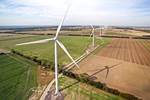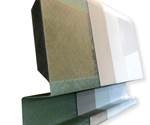BYK earns additive certification for rotor blade applications
The BYK-C 8001 coupling agent offers 60% improved mechanical strength, design freedom and universal application for glass fiber-reinforced epoxy resin systems.

Photo Credit: BYK Additive and Instruments
Specialty chemicals manufacturer, BYK Additives and Instruments (Wesel, Germany) has reported that its BYK-C 8001 additive product has earned Germanischer Lloyd (DNV GL, Oslo, Norway) Type Approval certification, for use within wind turbine rotor blades’ glass fiber-reinforced epoxy resin systems.
With the global trend growing for larger wind turbines — and thus, longer, heavier rotor blades — BYK says the BYK-C 8001 coupling agent enhances the material’s mechanical strength by up to 60% via an enhanced glass fiber matrix bonding, resulting in a more robust rotor blade. Addition features include more design freedom and universal applicability; for example, the product may be deployed in a liquid state, enabling easier dosage when using amine hardeners, BYK says. Fatigue test results are said to directly indicate longer blade life when applying the additive. Further, it is reportedly deployable “irrespective of age” with every epoxy-compatible glass fiber fabric, while maintaining consistent high quality in the finished component.
BYK notes that BYK-C 8001, available globally, has potential in comparable systems such as automotive or aviation components.
Related Content
-
Novel composite technology replaces welded joints in tubular structures
The Tree Composites TC-joint replaces traditional welding in jacket foundations for offshore wind turbine generator applications, advancing the world’s quest for fast, sustainable energy deployment.
-
Composites end markets: Pressure vessels (2024)
The market for pressure vessels used to store zero-emission fuels is rapidly growing, with ongoing developments and commercialization of Type 3, 4 and 5 tanks.
-
Collins Aerospace to lead COCOLIH2T project
Project for thermoplastic composite liquid hydrogen tanks aims for two demonstrators and TRL 4 by 2025.













